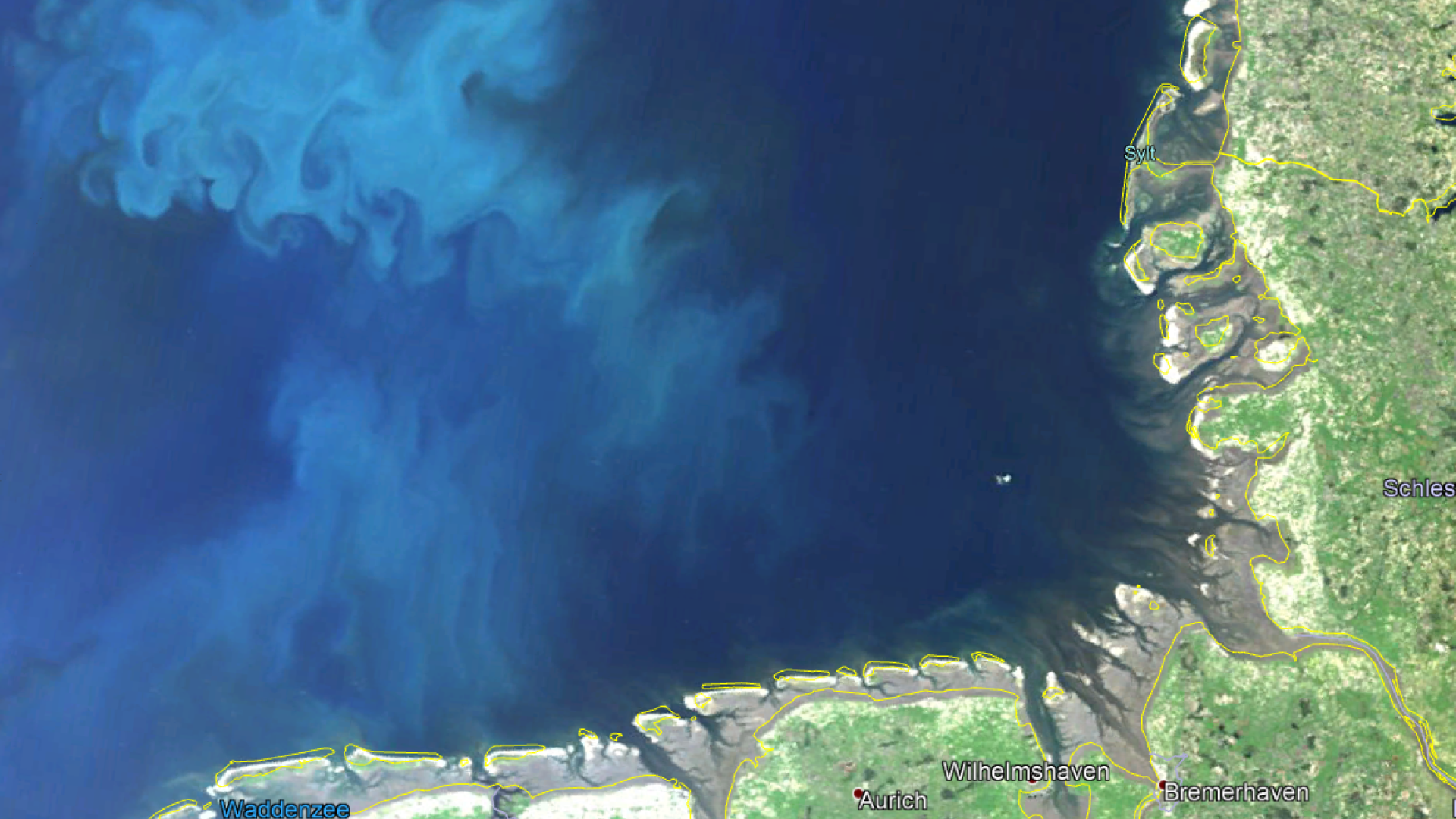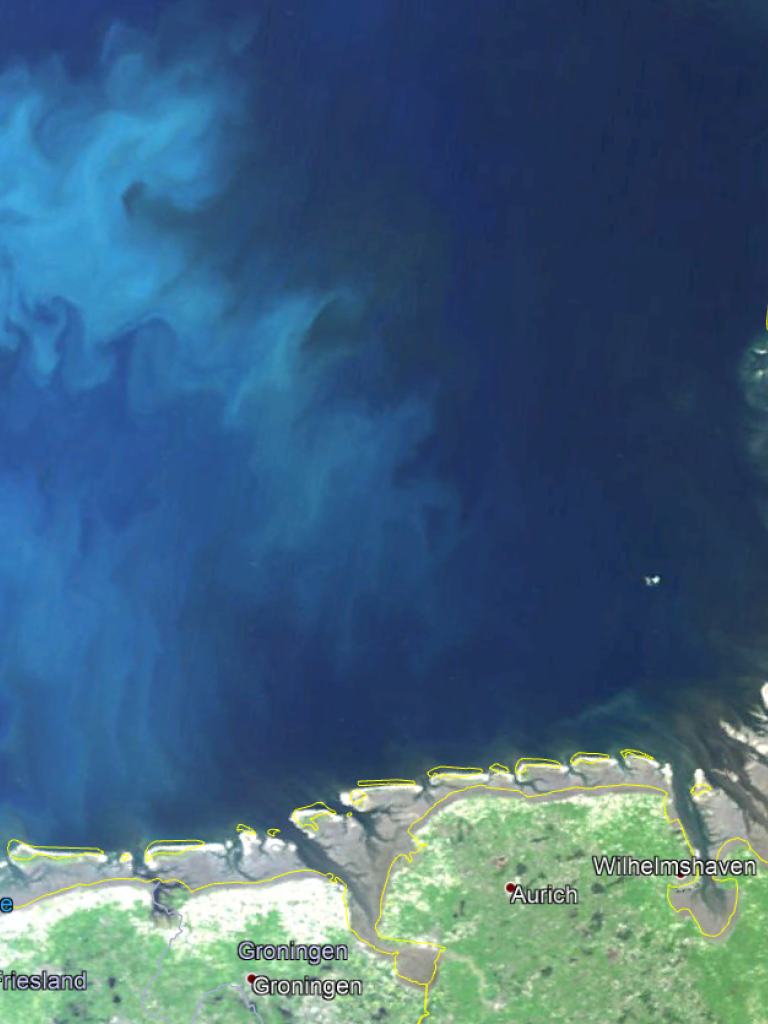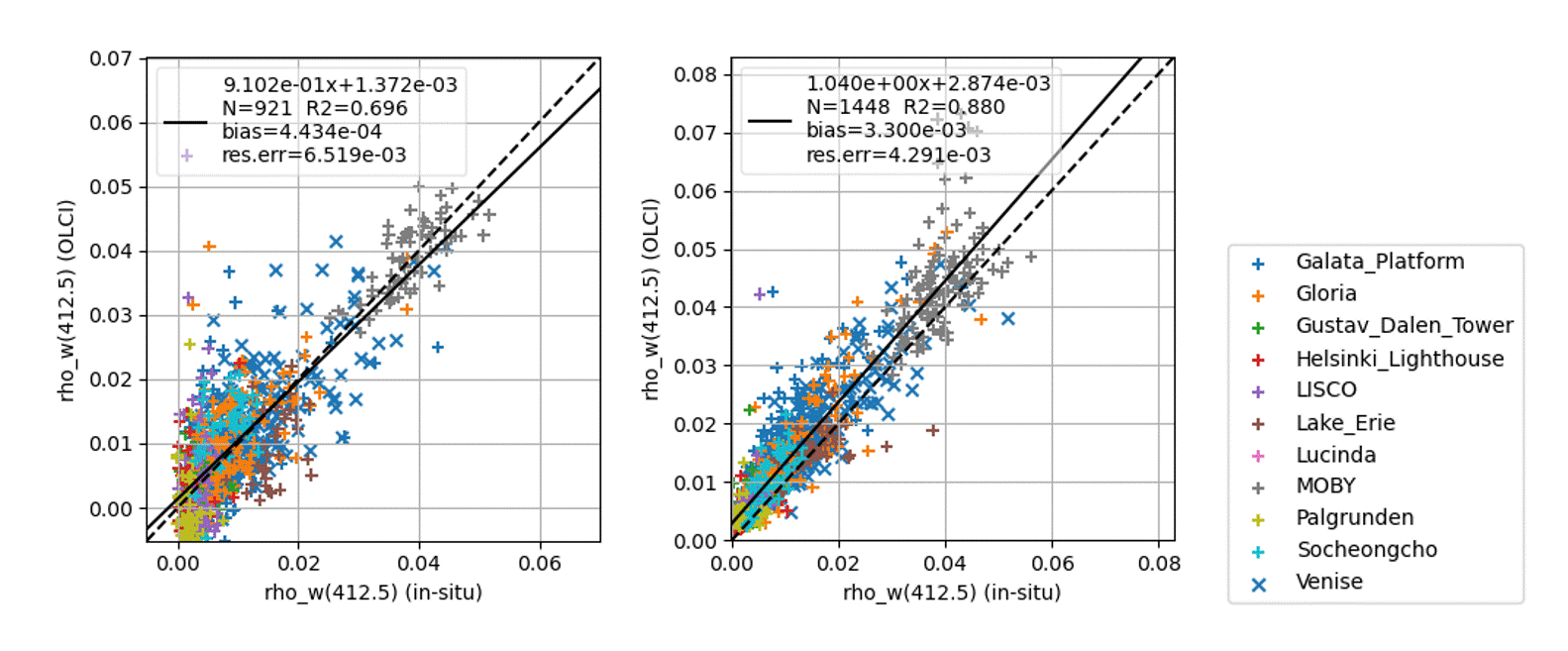16 February 2023
17 July 2019
Atmospheric correction (AC) is a critical step for retrieving spectral water reflectance — commonly referred to as water colour — from space-borne observations. It consists of removing the dominant and variable influence of the atmosphere and non-water contributions of the surface (e.g., Sun glint, white caps) from top of atmosphere (TOA) observations. Among many challenges, aerosol correction remains the most critical one due to the variability of particles in terms of types, their diverse horizontal and vertical distribution in the atmosphere, and their complex Sun light interactions.
As a legacy from developments dedicated to the past ENVISAT MERIS sensor, the current water reflectance Level 2 product from the Copernicus Sentinel-3 A and B Ocean and Land Colour Instruments (OLCI), procured by EUMETSAT, is obtained by applying an historical (also called 'standard') Atmospheric Correction (AC) algorithm that essentially relies on the Near-InfraRed (NIR) spectral range to determine aerosol optical properties. The Spectral matching Atmospheric Correction for Sentinel Ocean colour measurements (SACSO) project has focused on developing a new type of AC prototype to improve the quality of the OLCI water reflectance Level 2 product. The SACSO strategy is based on an innovative approach, using a spectral matching technique, to address several issues not resolved with the standard approach, e.g. the high sensitivity to strong aerosol contamination, in particular absorbing ones, and thin or sub-pixel clouds, which cause reduced accuracy and spatial coverage, negatively impacting the usefulness of the products.
The SACSO team has built upon the well-known POLYMER AC algorithm as a baseline for developing this alternative processor. The scheme still relies on iterative spectral optimisation using the full solar spectrum, but the atmospheric reflectance model and the numerical optimisation have been deeply reworked, leading to improved results and better algorithmic stability compared to POLYMER.
Objectives
The objectives of this study are to:
- review the state of the art and the requirements on atmospheric correction algorithms;
- perform scientific tests, based on simulated datasets, in-situ data or specific areas of interest, to investigate and consolidate specific aspects of an atmospheric correction scheme based on Polymer;
- develop a software prototype for OLCI implementing these algorithmic evolutions, and including an uncertainty propagation scheme, to be interfaced with the EUMETSAT study “Ocean Colour multi-mission algorithm prototype system” (OMAPS);
- generate a diagnostic dataset and validate the prototype;
- establish an active communication with relevant expert groups.
Overview
Main results
Five activities were carried out in this project:
- The state of the art of atmospheric correction has been reviewed and classified to list the strengths and weaknesses of the existing algorithms, using either the historical approach in which the aerosol properties are estimated in the near infrared and extrapolated in the visible bands, or coupled methods relying on the full spectrum. The assumptions and models, for both the atmospheric and oceanic signals, have been reviewed, as well as the uncertainty estimation methods. This review has been used to address the requirements on the algorithm and provide guidelines for its development.
- Scientific investigations were carried out, relying on radiative transfer simulations generated with the SMART-G code and on the diagnostic dataset, to better understand the assumptions and adequacy of the models to the actual variability of the atmospheric and oceanic signals. The impact of atmospheric transmittance, and the numeric optimisation method, have also been studied. A new model, called MSA (Multiple Scattering Approximation) has been proposed to model the aerosol reflectance, allowing for the application of more physically-based constrains on the signal than what is possible with the Polymer aerosol reflectance model. New inversion methods have also been implemented and tested, leading to improved stability of the algorithm. These evolutions have been implemented in a new prototype, including significant structural modifications compared to Polymer, and allowing for a more modular and flexible workflow.
- A diagnostic dataset has been established, containing OLCI scenes with various oceanic and atmospheric features: clear, coastal, turbid and absorbing waters, diverse aerosol events, sunglint, adjacency effects, and observations at high latitudes. This dataset also contains global data and time series over specific regions, that have been processed to investigate and illustrate the behaviour of the prototype in different conditions.
- The prototype has been validated using in-situ data and further characterised using the diagnostic dataset (see Figure 1 and 2).
- The study team has communicated with experts at EUMETSAT and with external atmospheric correction experts, e.g. Sentinel-3 Validation Team (S3VT), OLCI Quality Working Group (QWG), in order to integrate the most recent developments from the community, in terms of sensor characteristics and algorithms developments; the SACSO project has been presented at the S3VT Meeting in December 2020.





